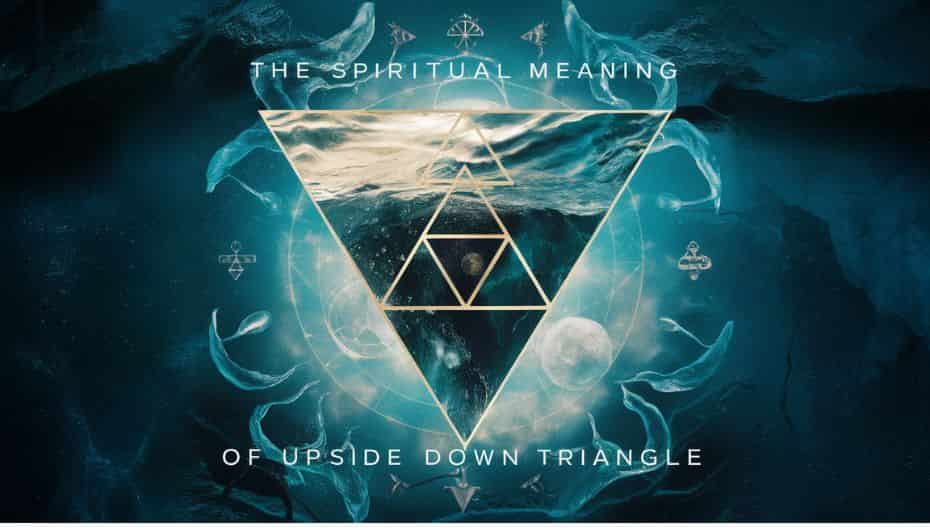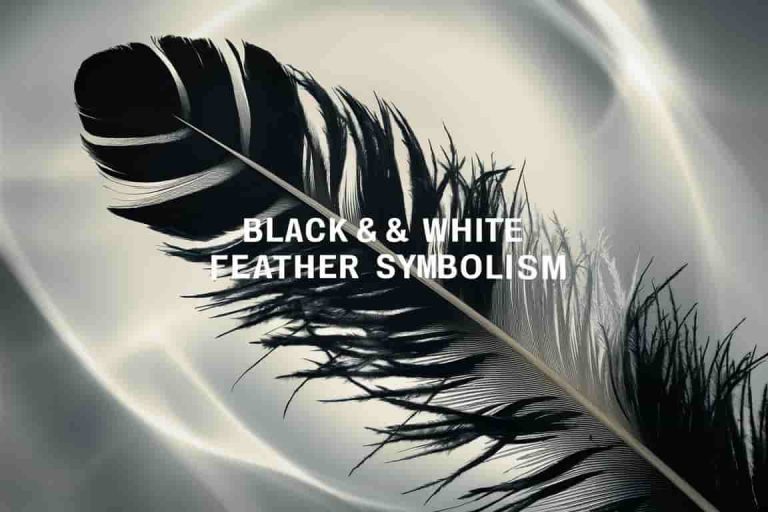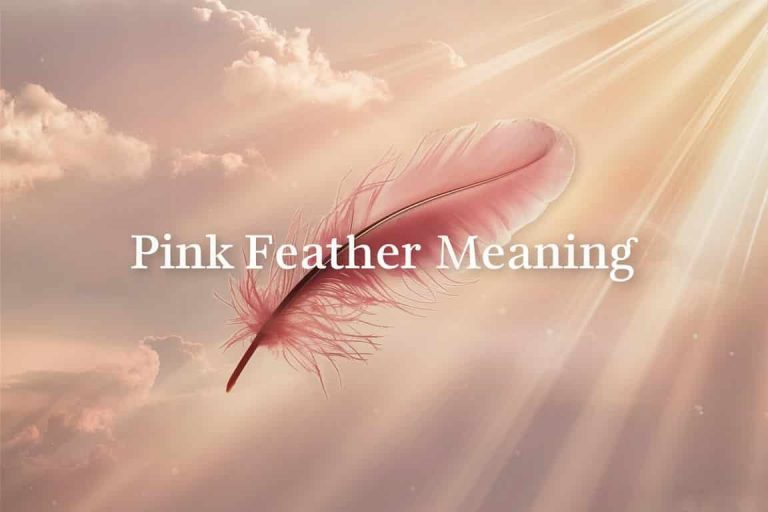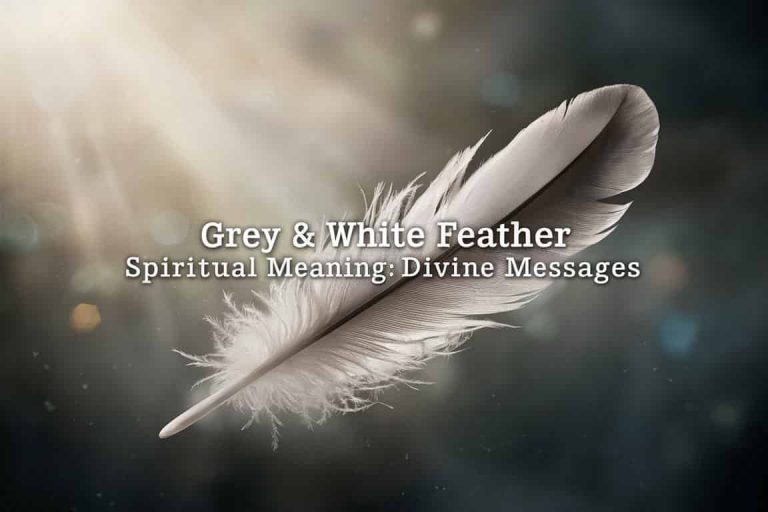Upside Down Triangle: Spiritual and Symbolic Meaning

The upside down triangle is a symbol with a rich history and diverse meanings. It appears in various contexts, from ancient civilizations to modern-day uses. Understanding this symbol helps us appreciate its significance across different fields, including religion, politics, and culture.
Symbolism of the Upside Down Triangle
The upside down triangle, also known as the inverted triangle, carries multiple symbolic meanings. Generally, it represents transformation and change. This shape, with its point facing downward, often signifies instability or caution. In many cultures, it is associated with feminine energy and the divine feminine principle. The triangle’s broad base and narrow point create a sense of movement and direction, often linked to the concept of descent or grounding.
The symbol is also seen as a representation of water, one of the classical elements. Water is associated with intuition, the subconscious, and the flow of emotions. This inverted shape invites introspection and a deeper understanding of the inner self and the universe at large. The upside down triangle’s connection to feminine energy is further emphasized by its resemblance to a chalice or womb, symbolizing receptivity and nurturing.
Historical Significance
The upside down triangle has a rich historical significance, spanning various ancient civilizations and modern contexts. Its meanings have evolved over time, reflecting different cultural, religious, and political interpretations. This section explores its use from ancient Egypt to World War II and its modern reclamation by the LGBTQ+ community.
Ancient Civilizations
The upside-down triangle has been used by various ancient civilizations, including the Egyptians, Chinese, and Greeks. In these cultures, the symbol often represented elements of nature and the cosmos. For instance, in ancient alchemy, the inverted triangle symbolized water, one of the four classical elements. This association with water highlights the triangle’s connection to fluidity, transformation, and the cyclical nature of life.
In Egyptian mythology, the triangle symbolized unity and trinity, often representing their gods and goddesses. The Greeks and Romans also used the triangle to symbolize the elements of earth, water, and fire, reflecting their beliefs in the fundamental building blocks of the natural world. These enduring symbols exemplify the timeless appeal of geometric shapes in conveying profound mythological concepts.
Use in Different Historical Periods
Throughout history, the upside down triangle has taken on different meanings. During World War II, the Nazis used colored upside down triangles to classify prisoners in concentration camps. Each color represented a different group, such as political prisoners, criminals, and those deemed “asocial.” This use of the symbol added a layer of oppression and persecution to its historical significance.
In modern times, the upside down triangle has been reclaimed by various groups as a symbol of strength and resistance. For example, the LGBTQ+ community adopted the pink upside down triangle as a symbol of gay pride, transforming it from a mark of shame into one of empowerment and solidarity. This reclamation highlights the community’s resilience and ability to turn a symbol of oppression into one of pride and defiance.
| Period | Use | Meaning |
|---|---|---|
| Ancient Egypt | Alchemical symbol for water | Transformation, fluidity |
| WWII | Nazi classification of prisoners | Oppression, persecution |
| Modern Times | LGBTQ+ symbol of gay pride | Empowerment, resistance |
Enjoyed this post? See what else we have.
Religious Contexts
The upside down triangle holds significant meanings in various religious contexts. Each religion interprets the symbol differently, reflecting its unique beliefs and traditions.
Christianity
In Christianity, the upside down triangle is often used to represent the Holy Trinity: the Father, the Son, and the Holy Spirit. This symbol emphasizes the unity and co-equality of the three divine persons. The triangle’s three points symbolize the triune nature of God, while its inverted position can signify divine reversal and humility. This concept of divine reversal is seen in the teachings of Jesus, who often spoke of the last being first and the humble being exalted.
Hinduism
In Hinduism, the upside down triangle is associated with the goddess Devi and the concept of Shakti, which represents feminine energy and power. This symbol is often used in yantras, which are mystical diagrams used in rituals and meditation. The inverted triangle in this context signifies the creative and nurturing aspects of the divine feminine. It is believed to attract prosperity, inspire courage, release creativity, and overcome obstacles.
Buddhism
In Buddhism, the upside down triangle, known as Pahana, symbolizes the journey from ignorance to enlightenment. It represents the transformative process of spiritual awakening and the attainment of higher knowledge. The triangle’s downward point signifies the grounding of spiritual energy and the connection to the earth. This symbol is integral to the Buddhist understanding of the three bodies of Buddhahood: the Body of Essence, the Body of Enjoyment, and the Body of Transformation.
| Religion | Symbolism | Meaning |
|---|---|---|
| Christianity | Holy Trinity | Unity, divine reversal |
| Hinduism | Shakti, Devi | Feminine energy, creativity |
| Buddhism | Pahana | Enlightenment, spiritual transformation |
Alchemical Meanings
In alchemy, the upside down triangle represents the element of water. Water is associated with purification, healing, and peace. The triangle’s shape, with its broad base and narrow point, symbolizes the flow and transformative nature of water. This element is crucial in alchemical processes, where it is used to dissolve and purify substances, leading to their transformation.
The water symbol in alchemy is often depicted in blue, reflecting its association with the qualities of wetness and coldness. Alchemists believed that water had the power to cleanse and renew, making it a vital component in their quest for the philosopher’s stone and the elixir of life. The upside down triangle’s resemblance to a cup or chalice further emphasizes its role in containing and channeling transformative energies.
Mathematical and Geometric Interpretations
In mathematics and geometry, the upside down triangle is known as the nabla symbol. It is used to represent the gradient operator in vector calculus, indicating the rate of change or slope of a function. This symbol is essential in various fields of science and engineering, where it helps describe physical phenomena such as heat flow, fluid dynamics, and electromagnetic fields.
The nabla symbol, introduced by the Irish mathematician William Rowan Hamilton, is a powerful tool in calculus. It allows mathematicians to calculate the gradient, divergence, and curl of vector fields, providing insights into the behavior of complex systems. The upside down triangle’s use in mathematics underscores its versatility and importance in understanding the natural world.
The nabla symbol is also used in other areas of mathematics, such as differential equations and linear algebra. Its ability to represent change and transformation makes it a valuable tool for solving problems and modeling real-world phenomena. The upside down triangle’s role in mathematics highlights its significance as a symbol of analysis and discovery.
Liked what you read? Discover more articles.
Cultural Meanings
The upside down triangle holds different meanings in various cultures. It is a versatile symbol that has been interpreted in many ways.
Gender Associations in Different Cultures
In many cultures, the upside down triangle is associated with the female gender. It symbolizes fertility and creativity. The triangle’s shape, resembling a chalice or womb, emphasizes its connection to feminine energy and the nurturing aspect of life. This symbol is often used in feminist movements to represent female empowerment and challenge traditional gender roles. It serves as a powerful reminder of the strength and resilience of women.
Symbol in Native American Cultures
In Native American cultures, the upside down triangle represents home and stability. It is often associated with the shape of traditional teepees, which provided shelter and protection. This symbol reflects the importance of community and the grounding influence of home. It also signifies the connection between the physical and spiritual realms, emphasizing the balance and harmony within the natural world.
Political Implications
The upside down triangle has significant political implications. It has been used in various contexts to represent different political ideologies and movements.
Use During the Nazi Era to Classify Prisoners
During World War II, the Nazis used colored upside down triangles to classify prisoners in concentration camps. Each color represented a different group, such as political prisoners, criminals, and those deemed “asocial.” This use of the symbol added a layer of oppression and persecution to its historical significance. The pink triangle, used to mark homosexual prisoners, has since been reclaimed by the LGBTQ+ community as a symbol of pride and resistance.
Modern Political Symbolism
In modern politics, the upside down triangle can represent grassroots movements and the idea of power flowing from the people to the leaders. This inverted power structure emphasizes the instability of unjust authority and the potential for change when the people withdraw their support. The symbol is also used by anti-fascist and anti-racist movements to signify opposition to oppressive regimes and ideologies.
Contemporary Uses
The upside-down triangle is used in various contemporary contexts, each with its unique significance.
Traffic Signs
In traffic signs, the upside-down triangle is used to indicate “yield.” Drivers encountering this sign must give the right of way to other road users. This use of the symbol emphasizes caution and the need to be aware of one’s surroundings. The yield sign is a universal symbol that helps maintain order and safety on the roads.
LGBTQ+ Symbolism
The upside down triangle has been reclaimed by the LGBTQ+ community as a symbol of pride and resistance. The pink triangle, once used to mark gay men in concentration camps, now represents solidarity and the fight for equal rights. This transformation highlights the community’s resilience and ability to turn a symbol of oppression into one of empowerment. The symbol is also used in LGBTQ+ activism and memorials, serving as a reminder of the ongoing struggle for acceptance and equality.
Tattoos
The upside down triangle is a popular tattoo design, often symbolizing strength, positivity, and support for LGBTQ+ rights. It can also represent personal transformation and the journey towards self-discovery. The tattoo’s meaning can vary depending on the individual’s personal experiences and beliefs. It is a versatile symbol that can be customized to reflect one’s unique identity and values.
| Context | Use | Meaning |
|---|---|---|
| Traffic Signs | Yield sign | Caution, awareness |
| LGBTQ+ | Symbol of gay pride | Empowerment, resistance |
| Tattoos | Personal and cultural significance | Strength, transformation |
The upside down triangle is a versatile symbol with a rich history and diverse meanings. From ancient alchemy to modern political movements, it has been used to represent transformation, empowerment, and resistance.
Understanding its various interpretations helps us appreciate the symbol’s significance and its impact on different aspects of society. The upside down triangle continues to be a powerful symbol, reflecting the complexity and depth of human thought and creativity.
Sources:






